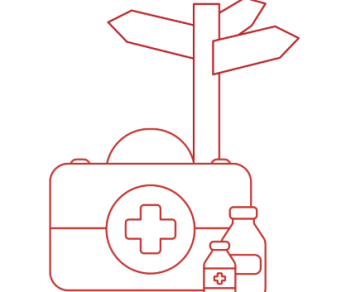Required Education
ADN or BSN
Attributes
Patient-facing
Work hands-on, directly with patients.
Structured
Follow a routine that allows you to anticipate and prepare for every situation.
Varied
Take on different tasks, patients, and situations every day.
You’ll help prepare living donors, and patients who are receiving an organ, for their procedures, and assist doctors during transplant surgeries.

What you’ll do
Education
You’ll teach patients and donors about the risks associated with transplant surgery and how to look after themselves after being discharged.
Treatment
You’ll dress wounds, administer medications, monitor patients’ vital signs after surgery, and watch out for infections and organ rejection.
Where you’ll work
- Ambulatory surgical units
- Hospitals
- Organ transplant facilities
How to become a Transplant Nurse
01
Get an Associate’s Degree in Nursing (ADN) or Bachelor of Science in Nursing (BSN).
02
Pass the NCLEX-RN.
03
Work as a Registered Nurse for two years, including 12 months of experience working with organ transplant patients.
04
Pass the Certified Clinical Transplant Nurse exam through the American Board for Transplant Certification.
05
You’re ready to work as a Transplant Nurse.
Join an Organization
Become a member of a Transplant Nurse organization to find career opportunities, learn from your colleagues, and support the profession.
A Travel Nurse’s role is also structured.
A Perioperative Nurse is another type of surgical nurse.







